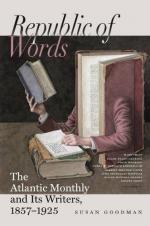What, then, is the value of the first folio as an authority? We are inclined to think that Mr. Collier (for obvious reasons) underrates it, and that Mr. White sometimes errs in the opposite direction. For eighteen of the plays it is the only authority we have, and the only one also for four others in their complete form. It is admitted that in several instances Heminge and Condell reprinted the earlier quarto impressions with a few changes, sometimes for the better and sometimes for the worse; and it is most probable that copies of those editions (whether surreptitious or not) had taken the place of the original prompter’s books, as being more convenient and legible. Even in these cases it is not safe to conclude that all or even any of the variations were made by the hand of Shakspeare himself. And where the players printed from manuscript, is it likely to have been that of the author? The probability is small that a writer so busy as Shakspeare must have been during his productive period should have copied out their parts for the actors, himself, or that one so indifferent as he seems to have been to the mere literary fortunes of his works should have given any great care to the correction of such copies, if made by others. The copies exclusively in the hands of Heminge and Condell were, it is manifest, in some cases, very imperfect, whether we account for the fact by the burning of the Globe Theatre or by the necessary wear and tear of years, and (what is worthy of notice) they are plainly more defective in some parts than in others. “Measure for Measure” is an example of this, and we are not satisfied with being told that its ruggedness of verse is intentional, or that its obscurity is due to the fact that Shakspeare grew more elliptical in his style as he grew older. Profounder in thought he doubtless became; though, in a mind like his, we believe that this would imply only a more absolute supremacy in expression. But, from whatever original we suppose either the quartos or the first folio to have been printed, it is more than questionable whether the proof-sheets had the advantage of any revision other than that of the printing-office. Steevens was of opinion that authors in the time of Shakspeare never read their own proof-sheets; and Mr. Spedding, in his recent edition of Bacon, comes independently to the same conclusion.[B] We may be very sure that Heminge and Condell did not, as vicars, take upon themselves a disagreeable task which the author would have been too careless to assume.
[Footnote B: Vol. III. p. 348, note. He grounds his belief, not on the misprinting of words, but on the misplacing of whole paragraphs. We were struck with the same thing in the original edition of Chapman’s Biron’s Conspiracy and Tragedy. One of the misprints which Mr. Spedding notices affords both a hint and a warning to the conjectural emendator. In the edition of The Advancement of Learning printed in 1605 occurs the word dusinesse. In a later edition this was conjecturally changed to business; but the occurrence of vertigine in the Latin translation enables Mr. Spedding to print rightly, dizziness.]




